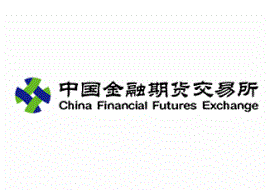Chinese equity index future already chasing Western volumes

Demand for the new Chinese equity index future has continued to build after its strong launch on Friday April 16.
The contract, the first listed financial derivative in China for more than a decade, tracks the 300 leading ‘A’ shares on the Shanghai and Shenzhen markets, weighted by freefloat.
Some 58,500 CSI 300 Futures were traded at the China Financial Futures Exchange on the first day. Volume rose to 124,000 on Monday and 153,000 on Tuesday. On Wednesday there were 121,000 trades and on Thursday 140,000.
This is a very strong start for a contract that some had feared would not catch on because of the high barriers to entry deliberately imposed by the Chinese regulators, for fear of rampant speculation.
Each contract is worth Rmb300 times the valaue of the index, now about 3,200, so Rmb960,000 ($140,000). That means, according to FOi calculations, the total notional value traded through the 596,000 contracts exchanged in the first week has been roughly Rmb572bn ($84bn).
For comparison, the daily average traded value in Eurex’s Euro Stoxx 50 Index Futures in March was Eu39.6bn ($53bn). That means the new Chinese contract is already trading, in cash terms, about a third as much as the Euro Stoxx 50.
Tough restrictions imposed by the China Securities Regulatory Commission include a requirement that every retail investor pay a Rmb500,000 ($73,000) deposit.
In addition, trading is done on pre-margin at a rate of about 15% of the contract value. The actual margin required by the exchange is 12% but broker fees will increase the figure to 15% to 20%.
The kinds of trader permitted to use the contract are also restricted — for example, Qualified Foreign Institutional Investors are not allowed to trade it.
“The CSRC does not intend for the new CSI 300 contract to be used as an instrument for profit but rather as a hedging tool,” said Dean Owen, China chief representative in Newedge’s Shanghai representative office.
However, despite the best efforts of the CSRC, the pattern of open interest in the contract suggests that market participants are not just using the futures as a long term risk management instrument to hedge exposure to the Shanghai and Shenzhen stockmarkets. Rather, the Chinese traders appear to have engaged in substantial intraday activity.
At the end of the first day’s trading, open interest stood at 3,590 contracts, about 6% of the volume traded that day. Open interest climbed every day during the week, to reach 6,716 at the end of Thursday – but that was only 4.8% of that day’s trading volume and 1.1% of all trading up to that point.
“It is still early stages, but we would have liked to see more participation from institutional clients,” Owen said. “It seems clear to me that investors are currently not using the index futures as a natural hedge against their stock portfolios. On the other hand, the relatively low open interest is also an indication of the low risk appetite of the individual investors, which is good.”
Another notable pattern in the trading so far is that the great majority of liquidity is in the front month (May 2010) contract. That contract had about 92% of the trading volume in the first week and 79% of the open interest – though there was trading every day in each of the June, September and December contracts.
Colin Packham, Sydney cpackham@fow.com
Jon Hay, London jhay@fow.com
| 16-Apr | 19-Apr | 20-Apr | 21-Apr | 22-Apr | Whole week | ||||||
| CSI 300 | Market OI | Market volume | Market OI | Market volume | Market OI | Market volume | Market OI | Market volume | Market OI | Market volume | Market volume |
| IF1005 | 2702 | 48988 | 3954 | 109733 | 4496 | 141862 | 5062 | 114531 | 5383 | 133247 | 548361 |
| IF1006 | 404 | 4908 | 580 | 8093 | 615 | 8005 | 634 | 4678 | 653 | 5281 | 30965 |
| IF1009 | 182 | 1730 | 299 | 2471 | 317 | 1979 | 260 | 752 | 311 | 932 | 7864 |
| IF1012 | 302 | 2831 | 287 | 3315 | 322 | 1573 | 363 | 1062 | 369 | 847 | 9628 |
| Daily total | 3590 | 5120 | 5750 | 6319 | 6716 | ||||||
| Daily total | 58457 | 123612 | 153419 | 121023 | 140307 | 596818 | |||||
Source: Newedge, FOi calculations
Found this useful?
Take a complimentary trial of the FOW Marketing Intelligence Platform – the comprehensive source of news and analysis across the buy- and sell- side.
Gain access to:
- A single source of in-depth news, insight and analysis across Asset Management, Securities Finance, Custody, Fund Services and Derivatives
- Our interactive database, optimized to enable you to summarise data and build graphs outlining market activity
- Exclusive whitepapers, supplements and industry analysis curated and published by Futures & Options World
- Breaking news, daily and weekly alerts on the markets most relevant to you


